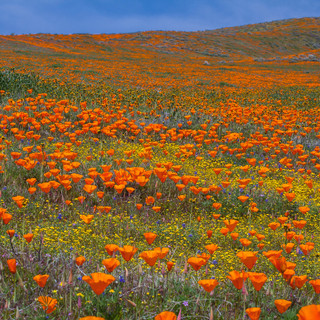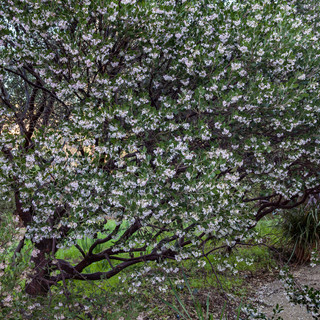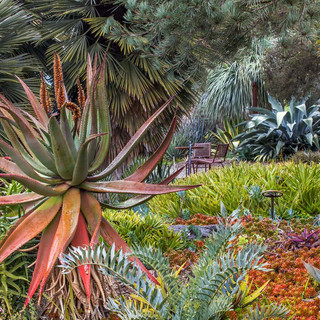
In our second episode focusing on the inspiring beauty of dry gardens and the plants and people who love them, we’re joined this week by photojournalist Saxon Holt. The sole photographer on more than 30 garden books, Saxon is also owner of the PhotoBotanic Garden Library and director of the Summer-Dry Project.
Saxon’s most recent book is a second collaboration between he and writer Nora Harlow: Gardening in Summer-Dry Climates, plants for a lush, water conscious landscape, published by Timber Press in 2020. The vision of the Summer-Dry Project is that in the midst of tumultuous climate change, it’s all the more important that gardeners be stewards of the land, attuned to the local environment on behalf of all creatures. The Summer-Dry Project provides gardeners in summer-dry climates authoritative plant information and inspiring photos that encourage sustainable garden practices.
One of the resources that Saxon works with and serves as an advisor to as well I believe is something called WUCOLS. A service of the University of California Division of Agriculture and Natural Resources, WUCOLS stands for Water Use Classification of Landscape Species. This searchable database compiles the water usage and drought tolerance of plants based on specific locations across the state of California, many of which would be comparable to other locations in other western states.
One of my favorite things about WUCOLS is that from Abelia to Zinnia acerosa (desert zinnia), you can look a plant up and see how much water use it requires in your region and OFTEN WUCOLS will simply say to you: INAPPROPRIATE. Meaning, this plant uses far too much water to be appropriate in your location. I love that clear message. Inappropriate. Like the plants compiled in Saxon and Nora Harlow’s Gardening in Summer Dry Climates, WUCOLS provides more information for all us to consider as we consider our own gardens and how to support them not just with beauty but with the wisdom and strength our climates and worlds need – now as ever.
Photos in this week's show notes are courtesy of Saxon Holt and the PhotoBotanic Garden Library.
You can follow Saxon's work online on at Saxon Holt, PhotoBotanic Garden Library, at the Summer-Dry Project, and on Instagram @saxonholt or @summerdry.gardens
IF YOU LIKE THIS PROGAM,
you might also enjoy these Best of CP programs in our archive:
BEING RADICLE, with Landscape Architect Christie Green
JOIN US again next week, when we’re joined by Severine von Tscharner Fleming, executive director and founder of the Greenhorns a new farmer advocacy and support collective with a mission to help re-form the current agricultural system with an eye toward ecology, regeneration, and community care. Listen in!
Cultivating Place is made possible in part by listeners like you and by generous support from the American Horticultural Society. Soon to Celebrate its 100th anniversary next year, AHS has been a trusted source of high quality gardening and horticultural information since 1922.
Today, AHS’s mission blends education, social responsibility, and environmental stewardship with the art and practice of horticulture. Members of AHS receive the award-winning flagship magazine, The American Gardener, free admission and other discounts to more than 345 public gardens with the Reciprocal Admissions Program, plus discounts on books, seeds, programs and more!
Listeners of Cultivating Place can receive a $10 discount on the annual individual membership of $35, by visiting www.ahsgardening.org/CP For your annual Membership to the American Horticultural Society for the special Cultivating Place rate of just $25 a year, head over to www.ahsgardening.org/CP.
Thinking out loud this week:
Hey It’s Jennifer –
In this conversation, I especially love Saxon – as a really successful photo journalist – emphasizing his responsibility for the work he does – its impact and its messages. I like his goal to help shift the aesthetic for what we all as gardeners see as beautiful and worth working toward or for.
In last week’s episode with Daniel Nolan, I inaccurately described Los Angeles climatically as a 'desert'. This is a misrepresentation born of gross generalization on my part, and I want to thank listen Krista Nicholds for her note about this. While the Los Angeles basin is a summer-dry, winter-wet environment – also known as a Mediterranean or dry subtropical climate with annual precipitation totals somewhere around 15 inches (by definition deserts receive less than 10 inches of precipitation annually), the Los Angeles basin is more complex and amazing by far than that, a mosaic of some of the most intriguing and remarkable and very specific plant communities in valleys and plains, on gentle and rugged coastline, and gentle and extremely rugged mountain slopes and peaks.
Vegetation types including and as wide ranging as wide swathes of chaparral, oak woodland and savanna, and pinyon-juniper woodlands, and higher-elevation forests that include white fir, Jeffrey pine, sugar pine, and lodgepole pine, the region includes coastal sage scrub, and coastal plain. The nuances between these types of classifications – none of which are desert - is so important. Our language is important, my use of language is important.
I might have shared this story with you before, but this past summer I participated in the Slow Flowers Summit at Filoli Historic House & Garden in Woodside, California. I enjoyed and learned something from every single presentation at the gathering, but the panel on Sustainability Farming and Floral Design was a highlight for me.
The three women – Kellee Matsushita-Tseng, Emily Adelia Saeger, and Molly Oliver, discussed the works and days of being farmers striving for practices that created personal, environmental and economic sustainability.
First they were in direct conversation about their experiences through their careers, and then they spoke while arranging the foliage, branches, seed heads, and flowers that each of them had chosen in advance in front of the summit attendees. It was moving in a host of ways. Emily Adelia Saeger had chosen her palette of plants for arranging from her love of the California Chaparral – that biome or seam of plant life, dominated by shrubs coevolved with California’s exposed hot summer dry slopes – those of interior mountains and coastal ridgelines.
Many of these shrubs are seriously tough broad leaf evergreens or they are summer deciduous to preserve water. The chaparral includes plants revered globally like ceanothus, manzanita, garrry, and styrax, salvia, clematis, calchortus, alliums, and so many more.
These plants are often, especially in summer, muted in color varying shades of dusty greens, browns, silvers, grays, or they are as noted above summer and/or drought deciduous.
As Emily worked with her dried flowers and seed heads, grasses, and branches, she noted that when she had first come to California she saw these brown summer plants as really ugly. But that as she had grown in her understanding of the conditions of this new place she called home she now looked out across the muted summer landscape of chaparral – and she saw not only great beauty but more importantly she saw wisdom and strength.
Wisdom and strength.
What is not to love if we can look out at our gardens and see wisdom and strength - and all the beauty and contributions and lessons that come with that?
WAYS TO SUPPORT CULTIVATING PLACE
SHARE the podcast with friends: If you enjoy these conversations about these things we love and which connect us, please share them forward with others. Thank you in advance!
RATE the podcast on iTunes: Or wherever you get your podcast feed: Please submit a ranking and a review of the program on Itunes! To do so follow this link: iTunes Review and Rate (once there, click View In Itunes and go to Ratings and Reviews)
DONATE: Cultivating Place is a listener-supported co-production of North State Public Radio. To make your listener contribution – please click the donate button below. Thank you in advance for your help making these valuable conversations grow.
Or, make checks payable to: Jennifer Jewell - Cultivating Place
and mail to: Cultivating Place
PO Box 37
Durham, CA 95938













































コメント